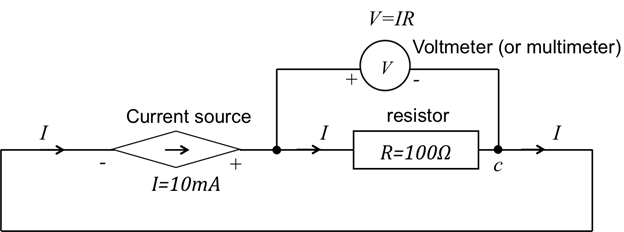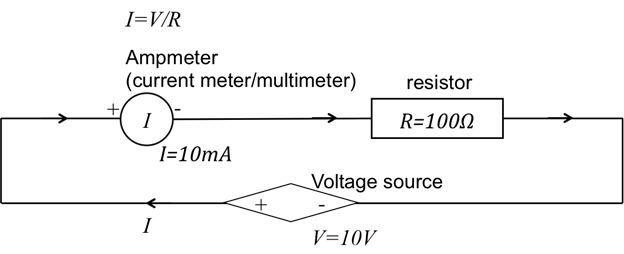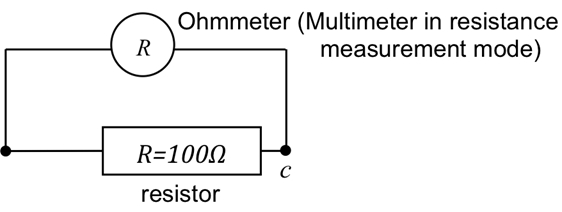Series and Parallel Resistors
Overview
Source: Yong P. Chen, PhD, Department of Physics & Astronomy, College of Science, Purdue University, West Lafayette, IN
This experiment demonstrates how current is distributed in resistors connected in series or parallel, and thus describes how to calculate the total "effective" resistance. Using Ohm's law, it possible to convert between the voltage and current through a resistance, if the resistance is known.
For two resistors connected in series, (meaning that they are wired one after the other), the same current will flow through them. The voltages will add up to a "total voltage", and thus, the total "effective resistance" is the sum of the two resistances. This is sometimes called a "voltage divider" because the total voltage is divided between the two resistors in proportion to their individual resistances.
For two resistors connected in parallel, (meaning that they are both wired between two shared terminals), the current is split between the two while they share the same voltage. In this case, the reciprocal of the total effective resistance will equal the sum of the reciprocals of the two resistances.
Series and parallel resistors are a key component to most circuits and influence how electricity is used in most applications.
Procedure
1. Practice on Generating and Measuring Current, Voltage, and Resistance
- Obtain a current source, a voltage source, and two multimeters that can measure voltage, current, and resistance.
- Obtain two 100-Ω resistors and two 10-Ω resistors.
- Obtain a breadboard, which is a convenient platform to connect and organize different circuit elements. The breadboard has many groups of pins. The pins of each group are connected together at the back of the board, and wires plugged into the s
Results
Representative results anticipated from the above procedure are listed below in Table 1 for resistors in series, and in Table 2 for resistors in parallel.
According to the results in Table 1, the total resistance R measured obeys Equation 6, where the resistances for components in series add to give the total resistance. The results in Table 2 s
Application and Summary
In this experiment, we have reviewed how to use voltage and current sources, and multimeters (voltmeter, current/amp meter, ohmmeter) to verify the current continuity law and Ohm's law. We also demonstrated how resistance adds in series connection, and how conductance adds in parallel connection.
Series and parallel connections are common in many circuit applications. For example, to use a voltage source V as a current source for some device with resistance R1, connect a much la
Skip to...
Videos from this collection:

Now Playing
Series and Parallel Resistors
Physics II
33.1K Views

Electric Fields
Physics II
77.4K Views

Electric Potential
Physics II
104.4K Views

Magnetic Fields
Physics II
33.4K Views

Electric Charge in a Magnetic Field
Physics II
33.7K Views

Investigation Ohm's Law for Ohmic and Nonohmic Conductors
Physics II
26.2K Views

Capacitance
Physics II
43.7K Views

Inductance
Physics II
21.5K Views

RC/RL/LC Circuits
Physics II
142.8K Views

Semiconductors
Physics II
29.8K Views

Photoelectric Effect
Physics II
32.6K Views

Reflection and Refraction
Physics II
35.9K Views

Interference and Diffraction
Physics II
90.9K Views

Standing Waves
Physics II
49.7K Views

Sound Waves and Doppler Shift
Physics II
23.4K Views
Copyright © 2025 MyJoVE Corporation. All rights reserved


